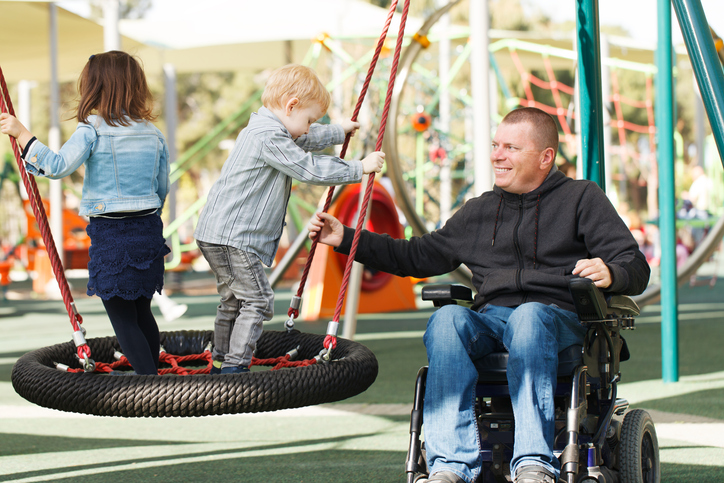Living with Chronic Pain
Preventing Medical Trauma in Children and Teens

Children and teens often experience anxiety and fear during health complications. Medical trauma can be caused by illness, pain, injury, procedures, or invasive and frightening events. Children and teens have little control over their health decisions and situations. Depending on their age, they may not fully understand what is happening to their body or why.
It is common for children to show their emotions through behavior rather than words due to their natural cognitive levels. This may include aggression, withdrawal, regression, or lack of cooperation. It can prolong distressing treatments, increase fear and anxiety, and cause trauma. Medical trauma, especially if left untreated, can create issues into adulthood, including the avoidance of essential medical exams and treatments. It is, therefore, imperative that caregivers and health care providers minimize the amount of stress that minors experience in medical settings.
CARE
The CARE process is a four-step process that can help to prevent medical trauma. CARE stands for choices, agenda, resilience and emotions.
Choices
Youth often experience a sense of losing control when they enter certain health care settings due to factors that are unknown. Offering them the ability to make certain choices can provide a sense of empowerment. Seemingly insignificant decisions, such as asking if they would like their heart or ears examined first, whether to keep their socks on, or what color bandage they prefer, can help them feel in control of the situation.
Situations in which choices play a significant role include genital exams. These exams can be daunting and induce trauma in minors, especially if they have a history of sexual abuse. To minimize the distress caused by these types of exams, it is best to speak directly to the teen or child. Let them know why the exam is needed and what to expect. They should also decide who they would like to remain in the room with them. Ask permission before beginning the exam to affirm the child’s emotional safety and sense of empowerment in a potentially frightening situation.
Agenda
Fear of a medical setting can be due to an unknown factor, such as not knowing what to expect. Providing the patient and their caregiver(s) with an agenda can reduce the anxieties they may be experiencing. Outpatient facilities are normally at a slower pace and have a set order of operations to follow. The physician can discuss with the child the length of the appointment, if they need to talk to them or the caregiver, the steps of the physical exam, and additional needs, such as a vaccine.
In hospital or emergency settings, it is difficult to predict the next step. However, it is important to be as transparent as possible. Although hospital providers may need to work quickly or are unsure of the next process, it can still be reassuring for a child to know what is occurring. For instance, let them know if they will be connected to a machine, if a test will be loud, or that it may feel like a pinch to draw blood. Knowing what to expect and why things are being done can help establish emotional safety and save time that might otherwise be spent trying to manage and soothe an upset patient.
Resilience
A large portion of health care can be unintentionally centered around negative language that is directed at the patient. For example, bed-wetting or certain behavioral issues, such as ADHD, are often linked to shame. Physicians and caregivers should avoid language that could be perceived as shaming, especially around the child.
Medical appointments are frequently concentrated around misfortune, such as health issues, behavioral issues, unpleasant tests, illnesses, pain, etc. It is beneficial to shift the language used during appointments to be positive. Instead of asking a child about their concerns or problems, ask them what they would like to be different. This removes the negative filter from the situation. Asking the child positively centered questions can also help a child associate positive experiences with medical settings.
Emotions
Medical settings can cultivate a variety of emotions for children and their families or caregivers. These emotions should be validated in a safe space. Phrases such as “I don’t like getting shots, either” or “You seem worried, do you have any questions?” are examples of identifying, normalizing and validating emotions. This helps to provide trust and feelings of safety. It also decreases the occurrence of acute anxiety and medical trauma.
Cultural beliefs
Cultures often hold different beliefs and ideals about the dynamics of health care. Be aware of individual backgrounds and what may cause further emotional distress. Those from the same culture may not have identical beliefs and values. If there is doubt regarding what protocol may be offensive, it is best practice to ask.
Pain control
Pain can regularly be a catalyst of medical trauma, especially for children. Some levels of pain may be unavoidable with certain medical procedures, however, in many cases, the pain that children experience is simply uncontrolled. The likelihood of medical trauma is decreased if pain is well-managed with pharmacological and non-pharmacological methods. A supportive caregiver that is present and effectively assisting the child through medical procedures is also essential.
Awareness of disparities
Providing trauma-informed care involves the awareness of, and action against, disparities that certain people or groups may have in health care settings. For instance, a study has shown that white children are more likely to receive analgesic medication than black children with similar levels of abdominal pain. It is important to actively work against biases that exist in the medical system so children that belong to different marginalized groups experience equitable health care.
Additional sources: American Medical Association Journal of Ethics and The National Child Stress Network


















